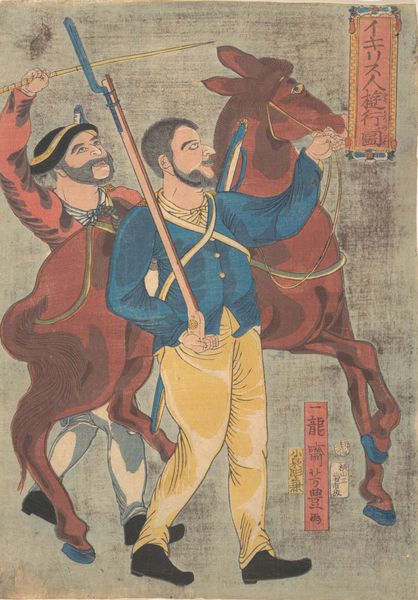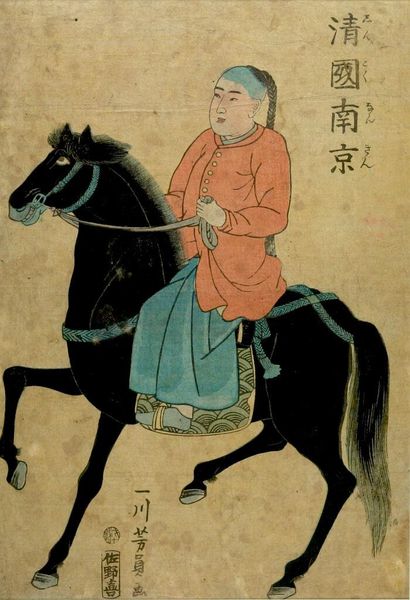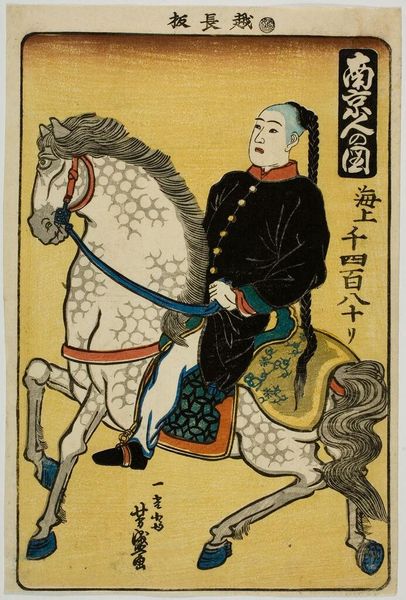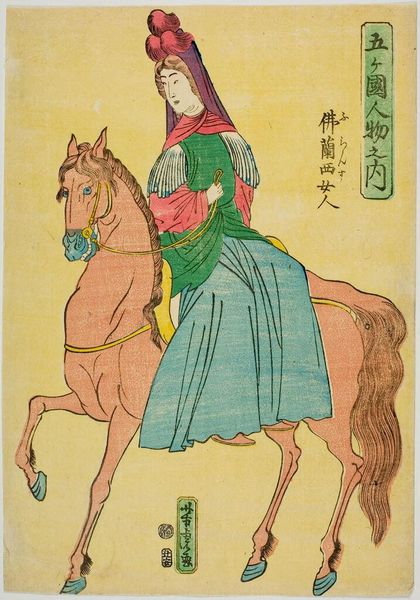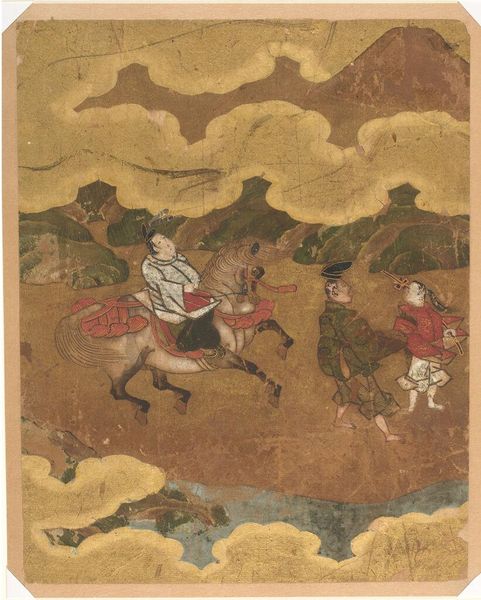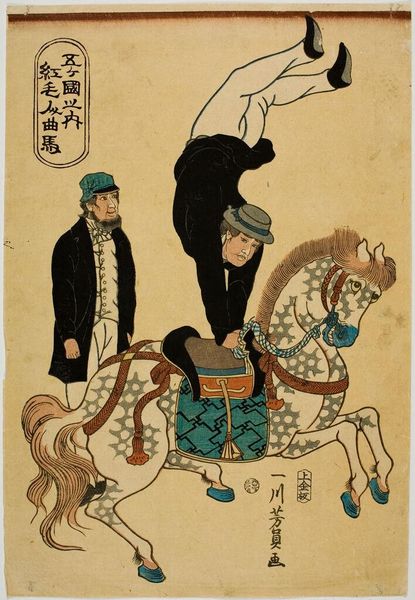
print, woodblock-print
# print
#
asian-art
#
ukiyo-e
#
woodblock-print
#
naive art
#
genre-painting
#
realism
Dimensions: 36.5 × 24.0 cm
Copyright: Public Domain
Curator: What strikes me immediately about this print is the palpable tension between the East and West—a sort of cultural collision. There’s an awkward stiffness to the figures, a feeling of mutual observation happening right before our eyes. Editor: Indeed. We’re looking at “Foreign Words (Ikoku kotoba)” by Utagawa Yoshiiku, created around 1860. It’s a woodblock print, part of the Ukiyo-e movement, and currently residing at The Art Institute of Chicago. What this print captures is a window into the socio-political landscape of Japan at that time. Curator: I’m intrigued by the symbols employed. The Western man on horseback, in stark contrast to the Japanese figure beside him, becomes an emblem of encroaching foreign power. The text above, a series of phonetic transcriptions, almost mocks the act of translation and cultural understanding. The Western man's face is bearded, imposing. The text at the top seems garbled but knowing what you've told me about the title, this garble takes on new importance as linguistic and cultural friction. Editor: Precisely! Yoshiiku is highlighting the difficulties, and perhaps even the absurdity, of direct translation. The presence of foreigners in Japan during this period—the late Edo period—was increasingly contentious. The image, though seemingly a simple genre scene, speaks to broader anxieties about national identity and sovereignty. Look, for example, at the western-style building barely suggested in the background -- even the setting speaks of changes to come. Curator: And the horse itself, such a proud, powerful creature. Is it meant to symbolize the force of Western expansion? Is it being led and controlled by the locals as if a powerful animal tamed and put into service for another? There's a feeling that it is only barely guided, that the potential for wildness is there. Editor: The horse may represent a potent symbol of status that is perhaps uneasily adopted. It emphasizes the adaptation required in Japanese society as the opening of Japan to Western trade grew increasingly unavoidable during the 1860s. What seemed progressive to some segments of society also raised fears of loss, even occupation, in other sectors of the population. Curator: It’s fascinating how a seemingly simple image can hold such a complex web of cultural meaning and anxiety. It almost makes you wonder what the figures are truly thinking. What are they not saying in each other's presence? Editor: It reminds us that art doesn’t exist in a vacuum. This print functions as a visual document, reflecting and shaping public opinion during a pivotal time in Japanese history. There is so much unsaid. Curator: A very powerful image, imbued with quiet yet potent symbolism that prompts many lines of inquiry regarding both its creation and contemporary interpretation. Editor: It invites us to consider how encounters between cultures inevitably leave their mark, transforming societies in ways both intended and unforeseen.
Comments
No comments
Be the first to comment and join the conversation on the ultimate creative platform.


